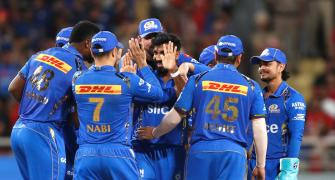With mobile phone tariff plans and packages getting more and more complex by the day, how is any consumer supposed to make up his mind on what he is really paying for the services on offer? More so with pre-paid plans, which account for 70 per cent of the mobile telephony market and where no one gets detailed bills?
Three students of the Indian Institute of Management, Ahmedabad -- Vivek Gupta, Dheeraj Awasthy and Satyendra Kumar -- took a close look at two representative service providers (Hutch and BSNL in the Ahmedabad market) and discovered that consumers have much more to compare than merely the explicit call charges.
Under the recently announced plans, the marginal consumer pays as high as Rs 6.60 per minute (as per tariffs on May 23) for local calls and Rs 9.40 per minute for STD calls in some tariff packages in the Ahmedabad market. This analysis has been made taking into account the talk-time on the card, the pulse rate and the period of the pre-paid cards.
For a prepaid consumer, it is important to understand the average minimum committed expense per day under the various schemes. This is dependent on the price-paid for the card and its expiry date.
The average expense per day (price divided by number of days) of maintaining a GSM mobile under the Hutch and BSNL tariff plans shows that the lowest option is Rs 10.00 by BSNL (Plan A) and the highest is Rs 22.20 per day in Plan D of BSNL.
Between plans B, C and D the Hutch consumer should be indifferent since the per day committed mobile expenses are constant at approximately Rs 17.50 whereas in the case of BSNL the per day expenses increase with card value.
The next step is to compute the actual burden per minute of talk-time for the consumer. To adjust the various rates for difference in card prices, talk-time offered and pulse rate, one has to proportionately scale down the card rate to that of the other service provider.
For example, when we compare Hutch and BSNL tariff plans, we can scale down the price of the Hutch tariff plan to a corresponding BSNL tariff plan (Hutch plan A of Rs 315 was scaled down to Rs 300 to match BSNL's tariff plan A).
The next thing is to understand pulse rates and how it affects the consumer. Hutch, for example, offers a pulse rate of 60 seconds whereas BSNL offers 30 seconds. This means that if you talk for 75 seconds, you will be billed for 120 seconds by Hutch and 90 by BSNL. But if you talk 55 seconds, both will bill you for 60 seconds.
Assuming an average call duration of one minute and taking all the three factors -- difference in card prices, talk-time offered and pulse rate -- into account, the actual cost burden per minute of call time used by a consumer can vary widely depending on whether the call is mobile-to-land line, mobile-to-mobile, or STD.
For example, assuming a consumer uses only mobile-to-land line local call services, the actual burden per call minute is Rs 5.30 for Hutch consumer in tariff plan A, whereas it is Rs 4.1 for a similar BSNL tariff plan. Now if we adjust for pulse rate difference, the actual burden for a Hutch consumer increases to Rs 6.6 per call minute consumed.
What would be the overall difference for a consumer in choosing one provider over another?
Using some complex maths (the calculation programme can be freely downloaded from: http://stdwww.iimahd.ernet.in/~vgupta), one can say that a consumer who buys BSNL tariff plan D gains Rs 104 if he spends an equivalent money in Hutch tariff plan D without making any adjustments (for expiry period, pulse rate, etc).
After accounting for the difference in the per day cost of maintaining a mobile, i.e. adjusting for expiry days only, a BSNL consumer loses Rs 15 as compared to the Hutch scheme. However, if we account only for pulse-rate adjustments and ignore expiry days, a BSNL consumer gains Rs 453 by spending an equivalent money in Hutch tariff plan D. Accounting for both adjustments, a BSNL consumer in tariff plan D gains Rs 334.
Your call
- If your usage of mobile is high, then the expiry days adjustment is a redundant factor and you should concentrate only on pulse rate adjustment. If your average call duration is high, then the effect of pulse rate adjustment will be low.
- For example, gains for a BSNL consumer in plan D will decline from Rs 334 to Rs 138 as the average call duration increases from 1 minute to 10 minutes.







